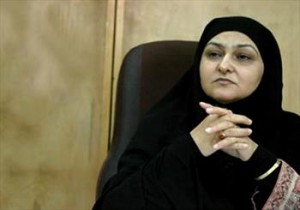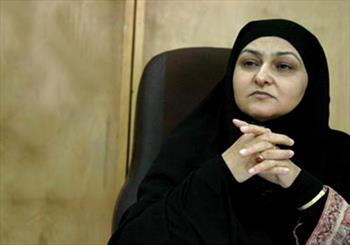 TEHRAN, Jan. 27 (MNA) � Adviser to the secretary general of Iranian Drug Control Headquarters in Woman and Family Affairs has said 9.3 percent of women are drug addicts.
TEHRAN, Jan. 27 (MNA) � Adviser to the secretary general of Iranian Drug Control Headquarters in Woman and Family Affairs has said 9.3 percent of women are drug addicts.Zahra Bonyanian detailed about the Headquarters� activity in cutting addiction among women. �The drug-related crime among women is high; the age to use the drugs has been down to 15 years; and the Headquarters has extended its scope of cooperation with NGOs, celebrities, and experts in attempts to reduce the addiction,� she added. �The majority of addicted women belong to 20-36 age groups, with opium, glass, crack cocaine, alcohol, and Afghani crack as the most popular substances among the women addicts,� she said.
Bonyanian, who was speaking to Mehr News about the number of jailed women addicts, told that of 7377 female prisoners, 65 percent had been jailed in relation to a drug-related crime, the majority being the drug abuse. �The majority of cases of women abuse are in drug trafficking, which accounts for many of imprisonments. This group of women faces extreme difficulties to return to normal life, since society would stigmatize them, treating them as outcasts,� she asserted.
Asked about the most demanded substances among woman, she told that heroine, glass, alcohol, Afghani crack, hashish, and ecstasy drugs are the priority by Iranian women addicts to abuse. �More than 55 per cent of woman addicts consume opium; 26.22 per cent take glass; 22.63 per cent drink alcohol, and 15.94 per cent of them take Afghani crack heroine,� she said.
Bonyanian also said that the majority of woman addicts belong to 20-36 age groups. �68 percent of addicts are in the age group designating population in the height of their social and economic activity,� she added, �15 to 19 is age when drug abuse starts.�
�It is interesting that more than half of the drug addicts reported their age of drug taking between 15 and 19 years of age, that is, as high school students. This age is regarded as critical age for any program intended to give information and awareness as to the drug abuse implications among the adolescent population,� Bonyanian believed.
�The Drug Control Headquarters has signed an agreement of understanding with the Ministry of Education to distribute brochures containing the necessary information and deploying female counseling staff in high schools in order to seriously address the issue in schools beginning the upcoming year (beginning�March 21),� she said.
She also said that 83 percent of woman addicts smoked drugs, shisha, or cigarette. Asked about the prevalence of smoking shisha among the young female adolescents, she told that the Headquarters did not regard shisha as an addiction; however, �a polling carried out among the addicts revealed that 83.68 per cent of women smoked cigarettes or shisha before addiction.�
Bonyanian cited curiosity and seeking pleasure as the main driving force of more than 1,325,000 addicts. �9.3 percent of this figure is women, who reported curiosity, seeking pleasure, recreation, psychological disorders, ease of access, persistence by friends, decreased disease symptoms, family conflicts, and sexual problems as the main cause of the substance abuse,� she said.
About the sources possibly leading population toward drugs, she believed that today addiction was not limited to specific social classes and that many well-offs of the society seek drugs to find happiness and pleasure. �Most of women are affected and beguiled by satellite TV ads about fighting obesity pills or skin protection creams in sliding into addiction, while any disease or disorder have their own special treatments,� Bonyanian believed.
She addressed Iranian woman as the protective, productive, and pillar of the society and family. �Our female population should reassess their capabilities so that they could exploit these capacities to the common good of the society at large,� Bonyanian said.
By Mehr News Agency
The Iran Project is not responsible for the content of quoted articles.











